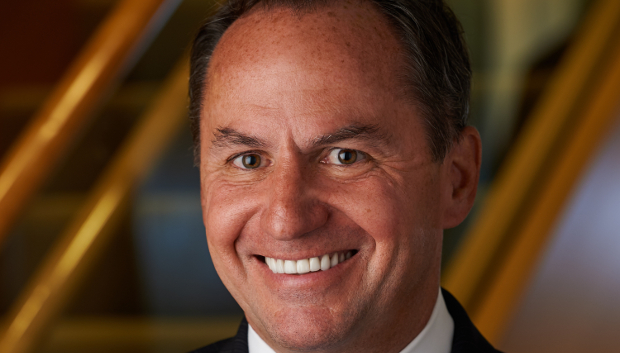
Intel puts customers first as chip supply tightens
As bold statements go, Intel CEO Bob Swan’s pledge last month that the company’s manufacturing would never again be a constraint on customer growth, is pretty high up the list. Especially when you consider that the PC market has suffered from growth constraints because of a shortage of Intel chips.
“Our supply constraints have had a disruptive impact on our customers’ design ecosystems,” Swan admitted, before adding: “We’ve committed to never again be a constraint on our customers’ growth. We’ve increased our capacity to improve our position in the second half, although product mix will continue to be a challenge in the third quarter, as our teams align available supply with customer demand.”
That’s quite a hostage to fortune Swan is making himself. And to Intel’s customers’ fortunes, too, if he fails to deliver on that commitment. I have to say that the latter half of that statement reads a little strangely. “Product mix will continue to be a challenge in the third quarter,” he states, “as our teams align available supply with customer demand”. That’s one of the things that tends to lead to shortages.
So are we to believe that it’s a challenge he is confident Intel will overcome? The implication of his pledge is that Intel will never again constrain customer growth. But if that’s the case why bother flagging up the potential challenge of aligning available supply with customer demand? Are we supposed to think more highly of Intel because it is going to meet that challenge and maintain supply to customers? Or is the company laying the ground with an excuse in case there’s a potential setback along the way? If there is, why bother making the pledge at all? You’d have to assume that Swan was very confident chip shortages wouldn’t happen again before he promised they wouldn’t. Otherwise, why make such a commitment so publicly?
Nevertheless, he has to be commended for making such an unequivocal statement so soon after Gartner released figures showing a 4.6% fall in year on year PC shipments for the first quarter of 2019. But Swan’s view was bolstered by comments from Microsoft’s CFO Amy Hood in the wake of the vendor’s third quarter results concerning its Windows business when she stated: “The overall PC market was stronger than we anticipated driven by improved chip supply that met both unfulfilled Q2 commercial and premium consumer demand as well as better than expected Q3 commercial demand.”
Looking forward, Hood commented that there did not appear to be “a pent-up situation heading into Q4 and our guidance certainly does not indicate that that is what we believe will happen”. She added: “We feel good about the supply in the commercial segment in the premium consumer segment, which is where the vast majority of our revenue is in OEMs. And so I think in those segments we feel fine for Q4.”
If the two biggest players in the PC market which, let’s not forget, has been traditionally referred to as the WinTel market, are making positive noises about chip shortages, it’s probably safe to assume the situation is definitely improving. Still, it will be interesting to see if Swan will be able to keep to his word.
Cyber threat affects all businesses
In other news, there was some interesting research published in the Cyber Readiness Report from global specialist insurer Hiscox which polls private and public sector organisations in the US, UK, Belgium, France, Germany, Spain and the Netherlands. The report found the frequency and range of cyber attacks had increased significantly in the past year with 61% of firms having experienced a cyber incident, compared to 45% in the 2018 report.
Notably, from a channel perspective, the number of attacks on small companies with less than 50 employees rose from a third to nearly a half, while attacks on SMEs with 50 to 249 employees nearly doubled to 63%. Commenting on the report, Hiscox Cyber CEO Gareth Wharton highlighted the increased threat to small and medium sized firms. “The cyber threat has become the unavoidable cost of doing business today,” he stated.
Given that small and medium sized companies make up the vast bulk of businesses in Ireland and the overwhelming majority of customers for most channel companies here, this suggests there is a large potential market to be tapped into.
As it’s highly unlikely that Irish small businesses and SMEs will be any less prone to cyber attack than their counterparts in the countries surveyed by Hiscox, we have to assume there is a big opportunity for channel partners to help to address the security concerns of those companies and their vulnerability to cyber attack. Given the high proportion who have been affected in the latest report, the old excuses of “it only happens to big companies” and “we’re too small for them to be bothered with” look much shakier than they did before.
What remains is to persuade small and medium sized companies not only that the cyber threat is not just a cost of doing business but that it’s a threat to the business of all companies, whatever their size. The figures from Hiscox help to provide some ammunition for that argument when the chances of being attacked as a small business are nearly one in two (and rising) or two in three for SMEs (and accelerating at a rapid pace). It’s up to channel partners to convince those customers of that threat and deliver the solutions that will protect their business at a cost they can afford.








Subscribers 0
Fans 0
Followers 0
Followers